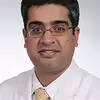Signing Bonus: How Shared Decision Making Improves Informed Consent
[[{"fid":"22906","view_mode":"media_original","type":"media","attributes":{"height":390,"width":596,"alt":" - conversation-guide-shared-making","class":"media-element file-media-original"}}]]
Most patients don’t fully understand informed consent forms. Some don’t even read them. But almost all patients sign anyway. Shared decision making (SDM) may be the tool that helps physicians and patients achieve true informed consent.
When physicians consent patients for invasive cardiovascular procedures, we typically hand them a few pieces of paper with a signature line at the end. We are aware that patients differ widely in their risks, values and preferences, rendering generic information inadequate. We know that most patients may not read or fully understand long, wordy documents (JACC Cardiovasc Imaging 2012;5[6]:649-55). Still, we provide educational information. We aim to explain the benefits and risks of the procedure as well as the alternative treatment options. We try to use terms that patients understand. It works: Almost all patients sign the documents to consent for procedures their physicians recommend. However, don’t we, as physicians who know the many limitations of the informed consent process, have to ask if we could be doing more to help our patients make truly informed decisions that reflect their personal risk tolerance and values?
The average American reads at an eighth-grade level, a fact not reflected in most informed consent documents. These forms are almost always long and written in English at the 12th-grade level (JACC Cardiovasc Imaging 2012;5[6]:649-55). They cite numerical risk data in percentages even though patients seem to understand absolute risk better than relative risk (Circ Cardiovasc Qual Outcomes 2014;7[2]:328-34). Physicians’ explanations of procedures—particularly of the pros and cons of other treatment options—also are often suboptimal (JAMA Intern Med 2015;175[7]:1199-206). Clearly, there are opportunities to improve informed consent and, of all healthcare professionals, physicians may be best positioned to tackle the challenge.
Creating the framework for shared decision making
SDM has been proposed as a solution for the challenge of informed consent. Incorporating SDM, so that patients have realistic expectations of the possible benefits and harms of therapeutic options, is one of the Institute of Medicine’s goals for patient-centered care (Crossing the Quality Chasm, 2001; JAMA 2010;303[12]:1190-1191). While there are conflicting opinions about SDM, it could become the standard of care, as there is an increasing body of literature supporting its use and its potential to reduce healthcare costs (JAMA 2015;314[14]:1445-6).
SDM is especially helpful where there are complex considerations to be made about a treatment’s benefits, harms, indications and equally effective alternatives. SDM interaction should be a bilateral process where a patient first communicates his or her values, preferences and life goals. Then, after factoring in the patient’s wishes, the physician shares his or her knowledge of the recommended treatment’s benefits, potential risks and alternatives (pros and cons of each) before the patient arrives at a final decision (Circ Cardiovasc Qual Outcomes 2014;7[2]:328-34). The goal is for the physician and the patient (sometimes with the family) to exchange information that leads to a true understanding of the relevant information as well as shared responsibility for the decision about how to proceed.
It is beneficial to have SDM interactions in clinic settings vs. on the day of the procedure. Patient decision aids, such as audiovisual materials or documents written in plain language with pictographs, help patients understand procedures. For patients who prefer a more passive role in decision making, SDM may be more easily achieved if another health professional (such as the patient’s primary care provider or general cardiologist) and/or members of the patient’s family join the interaction. Their participation may help alleviate bias or misunderstanding of the patient’s values, preferences and life goals.
Faisal Latif, MD, is director of the cardiac catheterization laboratory at VA Medical Center in Oklahoma City.
